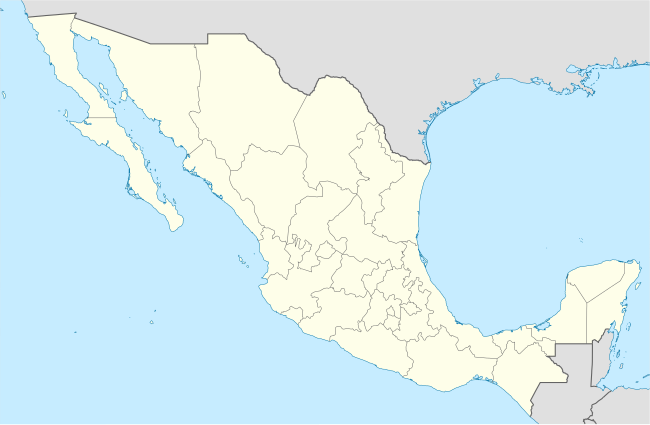|
Grupo Aeroportuario del Pacífico
Grupo Aeroportuario del Pacífico ("Pacific Airports Group"), also known as GAP, is a Mexican airport operator headquartered in Guadalajara, Mexico. It operates 12 airports in central and northwestern Mexico and two in Jamaica. GAP's airports include major urban areas, including Guadalajara, Tijuana, and León, as well as major tourist destinations, including Los Cabos, Puerto Vallarta, and Montego Bay. It is the largest airport operator in Mexico based on passenger traffic, with over 56 million passengers traveling through its 12 terminals in Mexico, and an additional 7 million passengers travelling through Jamaica. GAP is listed on the Mexican Stock Exchange and in the NYSE through ADRs since 2006. It is a constituent of the IPC, the main benchmark index of the Mexican Stock Exchange. HistoryPrior to 1998, Aeropuertos y Servicios Auxiliares (ASA), a federal corporation, was responsible for the construction, development, and operation of all airports in Mexico. At the time, ASA's network included 58 commercial airports covering major cities and tourist destinations throughout the country. In 1995, Congress passed a law regulating airport management, which allowed private operators to submit bids to operate 35 commercial airports. This process saw the emergence of four major private operators, including GAP, which was awarded a 50-year concession to operate 12 of the available airfields. Other groups emerging from this process included Grupo Aeroportuario Centro Norte (OMA), which was awarded a concession of 9 airports, Grupo Aeroportuario del Sureste (ASUR), with 13 airports, and Grupo Aeroportuario de la Ciudad de México, which continued to be majority-owned by the federal government, to operate Mexico City International Airport. Since that time, GAP has administered, operated, maintained and developed twelve airports in the Central and Pacific regions of Mexico.[2] In 2011, GAP entered into a dispute with one of its largest shareholders, Grupo México, which held more than 20% of the Group's shares and announced plans to increase its stake to over 30%. According to GAP bylaws, no one shareholder can control more than 10% of the company's float. In 2015, the parties reached an agreement, with Grupo México announcing it has reduced its stake in GAP, although not enough to meet GAP bylaws.[3] GAP has developed a comprehensive plan of airport development that is described in the Development Master Plan 2010–2014. To meet the objective to adapt the infrastructures of their airports, GAP foresees investing approximately 2,770 million pesos in the period 2010–2014. In February 2006, shares of GAP were enlisted in the NYSE under "PAC", and in the Bolsa Mexicana de Valores under "GAP". GAP derives income from passenger traffic and through marketing of its commercial spaces. In the commercial arena, the business strategy is focused on increasing the profit opportunities in retail spaces. To meet this strategy, the Group has placed in operation and continue to develop modern and attractive commercial areas. The objectives of Grupo Aeroportuario del Pacífico have been stated as: to fund the appropriate levels of infrastructure at their airports; to provide the technology, management methods, and modern operational tools to elevate levels of efficiency and operation; to meet international efficiency standards; and, finally, to maintain the present levels of security. The activities of the Group are held to a criterion of economic rationality, so that investors receive an attractive rate of return. Operating Airports
Airports outside México
ESGThe group has developed a comprehensive ESG platform, committing to incorporating social impact and environmental protection efforts into its operations.[5] This environmental commitment has been developed over the years through defined programs and actions, providing resources to ensure environmental goals and regulations are met. The stated objective of these programs is to reduce environmental impacts associated with airport activity and infrastructure development by defining the measures for its prevention, protection, improvement and correction in its case. In relation to these programs, GAP has been awarded an Environmental Certificate granted by the Federal Office for Environmental Protection. StatisticsThe company operates five of the ten busiest airport in Mexico by passenger traffic: Guadalajara (3rd), Tijuana (5th), Los Cabos (6th), Puerto Vallarta (7th), and Bajío (9th). Traffic figures have grown significantly since the group took control of the terminals, although these figures have been impacted by global events, including the Global Financial Crisis of 2008-2009, the COVID-19 pandemic, and a product recall by Pratt & Whitney in 2023, affecting hundreds of aircraft operated by major airlines in Mexico. Passenger numbersAirports in MexicoNumber of passengers at each airport by 2024:[6]
Airports in JamaicaNumber of passengers at each airport by 2024:[6]
References
External linksWikimedia Commons has media related to Grupo Aeroportuario del Pacífico. |
|||||||||||||||||||||||||||||||||||||||||||||||||||||||||||||||||||||||||||||||||||||||||||||||||||||||||||||||||||||||||||||||||||||||||||||||||||||||||||||||||||||||||||||||||||||||||||||||||||||||||
Portal di Ensiklopedia Dunia

